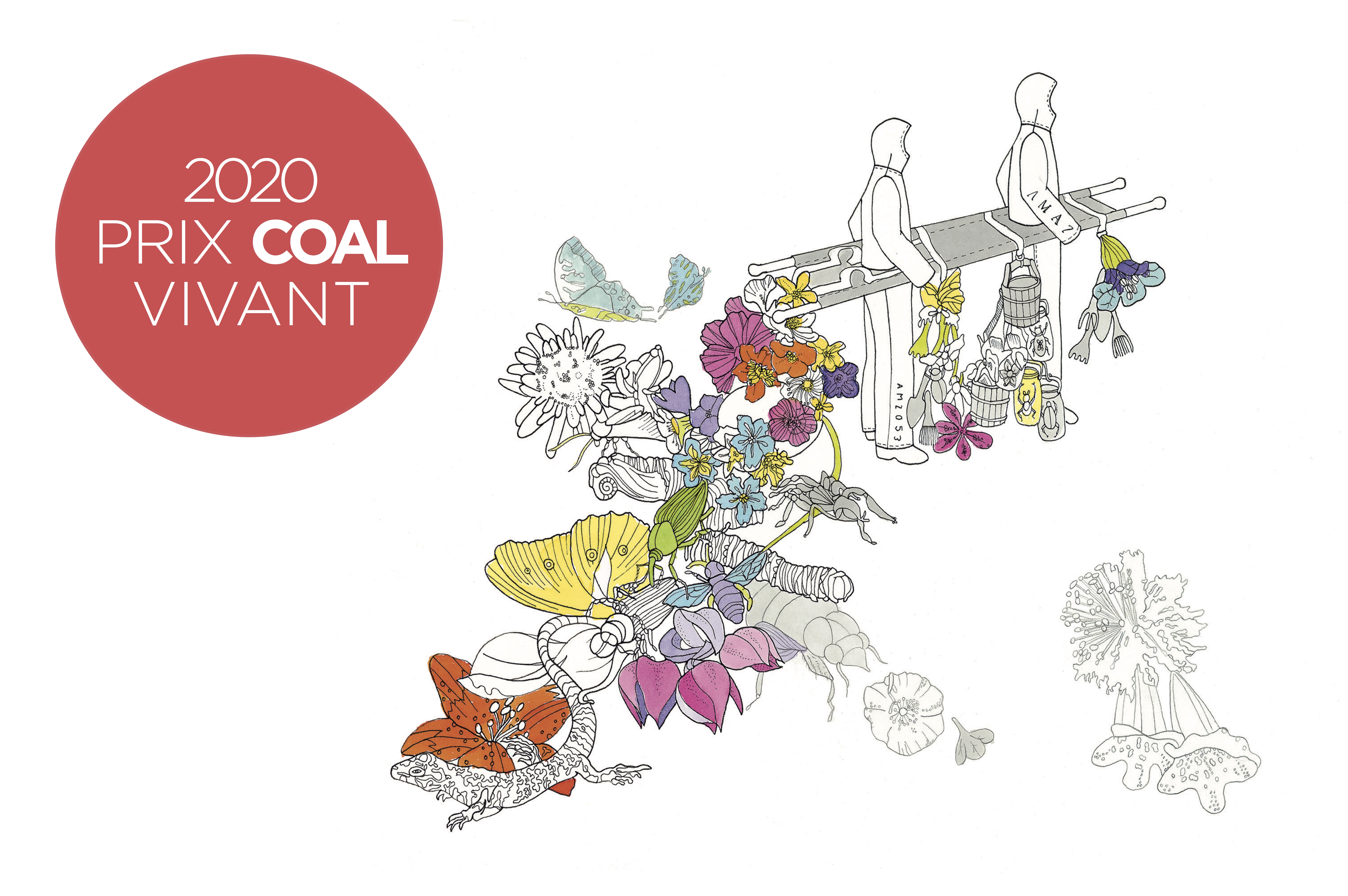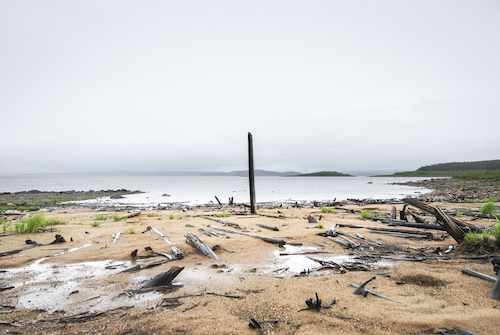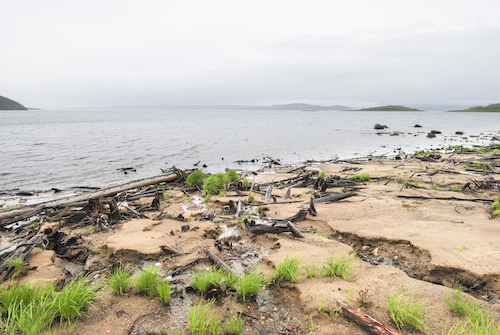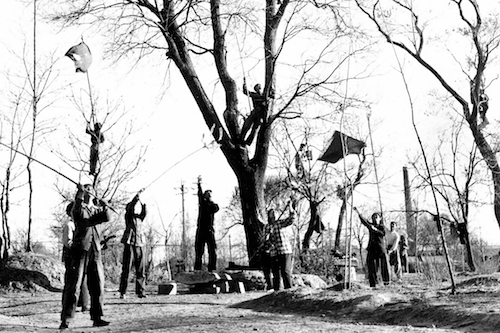COAL PRIZE 2020 – VIVANT (Biodiversity)


In 2020, the COAL Prize is devoted to the erosion of biodiversity. This eleventh edition is part of the program VIVANT, a Cultural Season for Biodiversity led by COAL and its partners in preparation for the IUCN World Conservation Congress 2020 (International Union for the Conservation of Nature) postponed from 7 to January 15, 2021 (initially scheduled for June 11 to 19), and in anticipation of the 15th Conference of the Parties (COP) to the Convention on Biological Diversity (China, postponed to an unspecified date).
The sixth mass extinction that threatens life’s diversity affects both specific species and ecosystems. In France, at present, 18% of species, or nearly one in five species, are already considered extinct or threatened. The last similar crisis, that sealed the fate of the dinosaurs, dates to 65 million years ago. Unlike the previous five, this mass extinction is primarily due to the impact of human activity. Five major causes have been identified: the changed use of natural areas, overexploitation of species, pollution, climate change and invasive species. A collective response from governments, the private sector, representatives of civil society and citizenry is urgently needed to cease this decline.
Let us stop the global plastic pollution crisis, reduce the impact of human activities at sea and on land, adapt to climate change, fight against deforestation, protect rivers, marshes, grasslands and coastal mangroves, strengthen the protection measures for great apes, marine mammals and counter the organized trafficking of wild species. The heterogeneity and interweaving of biodiversity protection issues requires a wide range of actions – regulation, prevention, adaptation and implementation of nature-based solutions. Transformative changes in our societies are needed to restore and preserve nature.
Faced with a situation as complex as it is urgent, the COAL Prize 2020 invites artists from all over the world to rally in order to describe a world that is still alive, to feel and experience biodiversity, but mostly to act and get involved with nature protection actors
Ten projects by artists who dare to imagine, experiment and work for a world more respectful of life and ecological balance have been nominated for the COAL Prize 2020, selected from several hundred projects from around the world. Through their creations, artists can raise awareness among decision-makers and citizens of the urgent threat to our infinitely rich biodiversity; highlight the extreme fragility and immense strength of life on Earth; and actively contribute to halting its mass extinction.
 Paul Duncombe, Québec, 2015
Paul Duncombe, Québec, 2015
PAUL DUNCOMBE, WINNER OF THE 2020 COAL PRIZE
The jury members awarded the 2020 COAL Prize to the artist Paul Duncombe for his Manicouagan project named after a crater formed by the fall of a meteorite 214 million years ago in Quebec.
Accompanied by a multidisciplinary team, he paints an artistic portrait of this territory thus linking the violence of mass extinctions and meteoritic impacts with the current crises of the Anthropocene era.
“With this award, the jury encourages a concerned and involved artist. Paul Duncombe sees nature as a long-term subject as evidenced by his various works and installations, and seeks to account for it, by multiplying the angles of approach, the scales and the landscapes. His transdisciplinary approach, his taste for field exploration presides over the creation of ambitious works mixing nature with new technologies, combining science, literature and poetry “summarized Christine Germain, director of the Museum of Hunting and Nature, member of the jury and partner of the COAL Prize.
For Olivier Lerude, Senior Sustainable Development official at the Ministry of Culture, also a member of the jury, “it was important to choose a dense project, mixing complex questions as the COAL prize winner, because our uncertain time is leading us all towards this complexity : the Manicouagan project by Paul Duncombe, because it addresses, in an artistic and aesthetic approach of great coherence, the long time of life and the Earth, is a project that seizes us because it is placed in the right place .”
PRESENTATION OF MANICOUAGAN BY THE ARTIST PAUL DUNCOMBE
 Paul Duncombe, Cratère d’Impact Manicouagan, Québec, Canada
Paul Duncombe, Cratère d’Impact Manicouagan, Québec, Canada
Nicknamed the Eye of Quebec, the Manicouagan impact crater is one of the largest and best preserved on Earth. With a diameter of 100 km, it formed 214 million years ago after the fall of an 8 km meteorite. Lost in the middle of Quebec, the Astroblème, now classified as a World Biosphere Reserve by UNESCO, is home to unique flora, fauna and geological features. The extraterrestrial origin of these reliefs, the indigenous history of the territory and the artificial engulfment of vast forests by the waters, give the site a mystical aura.
Paul Duncombe wishes to extend to Manicouagan his research work undertaken since 2015 in collaboration with naturalists and geologists, on the violence of mass extinctions and meteoritic impacts. From physical and digital samples taken on site during an expedition in complete autonomy, accompanied by a multidisciplinary team, it will be a question of representing all the mechanisms which led to the reconquest of the site by plants, insects and other living species, up to the First Nations. In the aesthetics of space exploration missions (real and fictitious), an artisanal electronic station will be deployed in the crater.
With the poetry inherent in the naivety of the artistic gaze vis-à-vis the creatures and natural phenomena observed, this creative laboratory will be deployed in the pursuit of the sublime, contingent beauties and proofs of an absolute hidden in nature. In the digital age, in a world now mapped out, rationalized, and aware of its finitude, this device, both technological and artisanal, digital and physical, at the crossroads of science, naturalism, survivalism and maker cultures ”, Will allow the reinvention or reintroduction of meaning and links between the initial historical crisis, the biological rebirth of the site, and the modern crises, present or to come of the anthropocene age.
Paul Duncombe was born in 1987 in Caen, France, where he lives and works. A graduate of the National School of Decorative Arts in Paris in 2014, Paul Duncombe explores the different scales of the landscape. His successive research, on the ice floes of Labrador, the storms in the Celtic Sea, the boreal forests, or even the irradiated lands of Fukushima, put in relation the apparent simplicity of the works of nature with the increasing technicality of modern societies. From simple gestures to the most complex monumental installations, his work crosses borders and disciplines, relying on collaborations with specialists from all walks of life: biologists, geologists, astrophysicists, mountain guides … thus multiplying points of view and experiences. He develops and exhibits his projects in France: Centquatre, 63rd Salon de Montrouge, Palais de Tokyo, Galerie Thaddaeus Ropac and abroad: Unicorn Center for Art (Beijing), Coopérative Méduse (Québec), Kyoto Art Center (Kyoto).
A SPECIAL MENTION FROM THE JURY AWARDS ÉLÉONORE SAINTAGNAN FOR ITS SPANISH PROJECT
 ©Image d’archive de la Chine pendant la campagne d’éradication des moineaux ordonnée en 1958 par Mao Zedong
©Image d’archive de la Chine pendant la campagne d’éradication des moineaux ordonnée en 1958 par Mao Zedong
The Jury also awarded The Sparrow Project by artist Éléonore Saintagnan, which pays homage to a common species that is highly endangered: the sparrow, whose world population has fallen by 95% in thirty years.
“Éléonore Saintagnan chose as a point of departure for her original and cinematographic project, a historical and sordid news item at the same time, largely unknown outside of China: the great Sparrow Campaign, orchestrated by Mao in 1958, the result of which was disastrous for the ecosystem of the Chinese countryside. We wanted to encourage this research project on the links of interdependence between humans and animals “concluded Christine Germain.
This special mention by the jury is accompanied by a residency at the Camargo Foundation which will allow the artist to develop his project. Located in Cassis, on the shores of the Mediterranean, the Camargo Foundation, founded by the American artist and philanthropist Jerome Hill (1905-1972), encourages creativity, research and experimentation through its program of international residencies for artists, researchers and thinkers. “We are delighted to partner with COAL, in particular for this special mention awarded to Éléonore Saintagnan, whose research and creation work on living things is at the heart of the concerns of the Camargo Foundation”, Julie Chénot, Director of programs the Camargo Foundation, member of the jury.
PRESENTATION OF PROJET MOINEAUX BY ÉLÉONORE SAINTAGNAN
 ©Éléonore Saintagnan, Nichoir
©Éléonore Saintagnan, Nichoir
In 1958, Mao Zedong undertook a vast campaign to rid China of its sparrows, accused of robbing men of 25,000 tons of rice grains a year. By observing the way of life of these birds, we realized that they could not fly more than two and a half hours in a row under pain of exhaustion. It was therefore decided that, for three days, young and old, men and women, would go out into the streets and into the fields, armed with flags, gongs and slingshots, to destroy the nests, break the eggs and prevent the birds to land. Ten million birds perished in the campaign, which ultimately had the opposite effect: the following year, the insects, devoid of their predators, destroyed almost all of the crops. This rather unknown historical event alone condenses the stakes of the disappearance of sparrows whose population has dropped by 95% in thirty years.
With The Moineaux project, Éléonore Saintagnan sets out to create a kind of carnival ritual intended to atone for our past human faults and to recall, through a research project, the links of interdependence between men and sparrows. A film will combine color images and black and white archives, notably reconstructing Mao Zedong’s campaign. This cruel fable tells us about the folly of men through a particularly striking example of extermination.
Far away, this episode does not resonate any less with our era which sees the progressive and worrying disappearance of birds and biodiversity in general. The artist will also act concretely for the preservation of sparrows through the collective realization of works and nesting boxes in public space and the mobilization of young people and artists in connection with associations and scientists, favoring the reintroduction of species in town.
Éléonore Saintagnan was born in 1979 in Paris, France. She lives and works in Brussels in Belgium. A graduate of the National Fresnoy Studio and then of the SPEAP master’s degree from Bruno Latour at Sciences Po Paris, in 2010 she received the Commissioner’s Prize at the Montrouge fair. In 2018, her film Une fille de Ouessant was awarded the best short film at Visions du Réel (Switzerland), then she won the Isère contemporary art prize with a residence in Moly-Sabata. She exhibits in France: CRAC Alsace, Palais de Tokyo, at Néon in Lyon, Mains d’oeuvres in Saint-Ouen, La Criée Center for Contemporary Art in Rennes, and abroad: Wiels (Brussels), Galerie Elaine Levy (Brussels) as well as in film festivals like FID Marseille, Hors-Pistes at the Center Pompidou, or DOC Fortnight at MoMA (New-York), MMCA (Seoul).
SHORTLISTED FOR THE 11TH EDITION OF THE COAL PRIZE ARE:
Minerva Cuevas (Mexico), Monarch, the butterfly that could tell the history of the world
Anthony Duchêne (France), J’enherbe le monde
Paul Duncombe (France), Manicouagan
Lia Giraud (France), Écoumène
Louis Guillaume (France), Saisons et espèces, structures du vivant
Hypercomf (Greece), Center for studies of Ocean Floor as Ceiling
Spela Petric (Slovenia), PL’AI
Victor Remere (France), Les indemnes de l’art
Éléonore Saintagnan (Belgium), Le projet Moineaux
Linda Sanchez (France), Colonie
THE SHORTLISTED PROJECTS
There are artists who venture forth as explorers, to discover and describe atypical and unknown ecosystems at the fringes of the Earth. In Les indemnes de l’Art, Victor Remère roams the unknown and forbidden lands of French military territories, which, maintained and preserved from human exploitation for decades, have become veritable reservoirs of remarkable biodiversity. The artist thinks of them as “laboratory zones » that combine scientific research, artistic practices, and agricultural know-how which could lead us to invent, adapt and develop new defense strategies in service of our precious biodiversity.
Paul Duncombe unveils a geographical relief of extraterrestrial origin: the « Eye of Quebec » impact crater in Manicouagan, Canada, was formed 214 million years ago as a result of a falling meteorite. On an expedition with a multidisciplinary team, he will depict this teeming territory through the various mechanisms of the plants, insects and other living species that reconquered the site before the first indigenous peoples arrived.
The reoccupation of nature in disused places formerly colonized by Man fascinates Linda Sanchez. Her installation Colonie is a poetic composition of lichen-covered objects. This unique organism, arising from a symbiosis between fungi and algae or cyanobacteria, covers more than 6% of the earth’s surface, may eventually cover all that remains of our western society.
Monarch, the butterfly that could tell the history of the world, is a video installation proposed by Mexican artist Minerva Cuevas. It traces the story of another emblematic species whose population has declined by almost 97% in one decade. The disappearance of this migratory butterfly, which for a few months every year, travels from Canada to Peru, represents the collapse of a chain of ecosystems on the American continent.
Many common species are also threatened; the world population of sparrows has fallen by 95% in thirty years. Le projet Moineaux by Éléonore Saintagnan explores the historical and scientific origins of its disappearance through cinema, but also works towards the preservation of sparrows by reintroducing them to our cities, mobilizing young people and artists in connection with local associations and scientists to collectively make and place birdhouses in the public space.
Artists also experiment with solutions through artistic work, working towards acts of resilience. For J’enherbe le monde, Anthony Duchêne collaborates with vignerons to create in situ installations and living art-objects that promote the development of biodiversity. Using soil, plants and minerals as arable host for his work, these are in turn buried and transform into fertile ground for the vines.
Using plants as an artistic resource is the heart of Louis Guillaume‘s project Saisons et espèces, structures du vivant in which he reconnects his practice to the cyclic nature of the seasons by acquiring knowledge around the natural materials that he harvests across the year.
Écoumène, by Lia Giraud, builds on the inherent technological potential of life, in particular the purifying qualities of micro-algae to sanitize polluted water, as well as using it as a photographic medium. She creates ‘living images’ through her photographic process of Algaeography in which the photosensitive micro-algae literally develop the image to which they are exposed.
Aside from exploratory quests and tangible solutions, artistic creation also delves into the field of fiction and dystopia, to better grasp and question our reality. Center for studies of Ocean Floor as Ceiling is an architecturally guided fictitious and immersive visit to an office on the ocean floor which tackles the problem of marine plastics, the debate on responsibility for pollution in international waters and highlights the importance of deep sea ecosystems. In the process the artists, Hypercomf – Greek duo comprising Ioannis Koliopoulos and Paola Palavidi, also promote inventive and functional re-use solutions for materials collected from local beach cleanings.
From function to fiction to function again, this circularity feeds the imagination of Spela Petric. PL’AI is part of her plant-machine project, for which an interdisciplinary team of scientists, artists, programmers and engineers slowly work towards making a machine that thinks of itself as a plant. In response to the disregard of plants, PL’AI playfully investigates plant agency and behaviour by facilitating new interactions between plants and computer-based technologies in a time when computational abstraction in algorithmic governance is our shared reality.

JURY
![]()
Christophe Aubel, Directeur Général Délégué à la mobilisation, Office français de la biodiversité
Julie Chénot, Directrice de la Fondation Camargo, Cassis
Jean-Max Colard, Critique d’art, commissaire et responsable du service de la parole, Centre Pompidou
Felizitas Diering, Directrice du FRAC Alsace
Christine Germain, Directrice du Musée de la Chasse et de la Nature
Fabrice Hyber, Artiste
Olivier Lerude, Haut fonctionnaire au Développement durable, ministère de la Culture
Charlotte Meunier, Présidente des Réserves naturelles de France
THE PRIZE
![]()
The winner of the COAL Prize will receive an award of 10,000 euros and an (optional) residency at the Belval estate (Ardennes), property of the François Sommer Foundation.
The François Sommer Foundation was founded in 1966 by François and Jacqueline Sommer, pioneers of the implementation of a humanist ecology. Faithful to the commitments of its founders, it works for the respectful use of the resources of nature, the sharing of wealth of the natural, artistic and cultural heritage for the protection of a biodiversity in which mankind finds its proper place.
AWARD
![]()
The winner of the COAL Prize will receive an award of 10,000 euros and an (optional) residency with additional financial support for artistic production at the Belval estate (Ardennes), property of the François Sommer Foundation.
The François Sommer Foundation was founded in 1966 by François and Jacqueline Sommer, pioneers of the implementation of a humanist ecology. Faithful to the commitments of its founders, it works for the respectful use of the resources of nature, the sharing of wealth of the natural, artistic and cultural heritage for the protection of a biodiversity in which mankind find its proper place.
The Belval estate is located in the commune of Belval-Bois-des-Dames. With an enclosed area of 600 hectares, it is essentially a forested area covered in meadows and 40 hectares of ponds. A veritable observatory of rural life and wildlife, each year it welcomes selected artists who contribute to the representation of their vision of Man’s relationship to his natural environment. Testament to the Foundation’s commitment in supporting contemporary artistic creation, the residency at the Belval estate contributes to the dissemination of the artists’ works to a wide audience. The combined knowledge of the scientific and educational teams of the Museum of Hunting and Nature and those of the Belval estate will also be available as a resource for the artists. We invite you to consult its charter on COAL website.
> See the residency charter
PARTNERS
![]()
The COAL Prize is supported by the Ministry of Ecology, the Ministry of Culture, the European Union, through the ACT network, the French Agency for Biodiversity, the Museum of Hunting and Nature and the François Sommer Foundation. The COAL Prize is realized in partnership with the IUCN French Committee, the Natural Reserves of France, the Federation of Regional Natural Parks of France, the WWF, the French Southern Region, the city of Marseille and the Parc national des Calanques and all the partners of VIVANT.
COAL – CULTURE & DIVERSITY STUDENT PRIZE
![]()
This year COAL and the Culture & Diversity Foundation, in partnership with the Natural Reserves of France, are also launching the first edition of the COAL Culture & Diversity Student Prize. Four projects have been shortlisted for the prize, with entries from students studying in schools of arts or culture. Shortlisted projects from these two Prizes will be exhibited at the IUCN World Conservation Congress in January 2021.
ABOUT THE PRIZE
![]()
Each year the ten projects are shortlisted by a committee of professionals among the projects received through the international open call.
The winning project will be chosen by a jury composed of representatives of partner organizations of the 2020 COAL Prize and personalities of art and ecology. In 2020, an additional prize will also be awarded by the public of the Nature Generation Areas, spaces led by the Ministry of Ecology and the French Agency for Biodiversity, in the context of the IUCN World Conservation Congress 2020.
In addition, all applications considered by COAL and the selection committee will become part of a network of artists and projects may can be solicited or promoted for opportunities and actions carried out by COAL and its partners.
CONTACT
![]()
COAL
contact@projetcoal.fr
Image credit: Lucy+Jorge Orta, AMAZONIA EXPEDITION DRAWINGS, 2012




